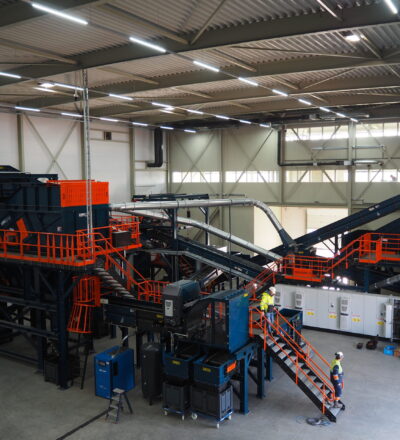In this study we replicated a typical high-quality post-consumer polypropylene (PP) recycling process to investigate its losses and emissions and study potential improvements. To our knowledge this is the first time that quantitative measurements on all process steps have been performed instead of an accumulated yield and emissions in water.
In the process an overall PP yield of 85 wt% based on pure PP input is achieved. The loss of target material is largest at the two mechanical dryer steps (6.6 wt%) and in the wet grinder combined with friction washers (4.0 wt%). In the process we observed approx. 3.9 wt% of the PP input as microplastics in the wastewater before the dissolved air flotation unit which is capable of 97–99 % mass-based removal of microplastics (MPs). Around 330 µg of PP was emitted to air at the mechanical drying step for each kg of input material. This is a very low mass fraction, but considering the particle size distribution the number of particles is vast. This emission can be reduced by using air filters at locations where MPs are generated. To reduce losses and emissions we investigated a few potential process changes. Compared to current practice, positive results were achieved by ensuring that the knives of the wet grinder remain sharp. The mechanical drying process can be improved by lowering the centrifugal speed which reduces the generated microplastics here from 4 wt% to 1 wt% without significantly affecting the moisture content.
Download your free copy
Our publications are free to access. Simply provide your first name and email address to download.
